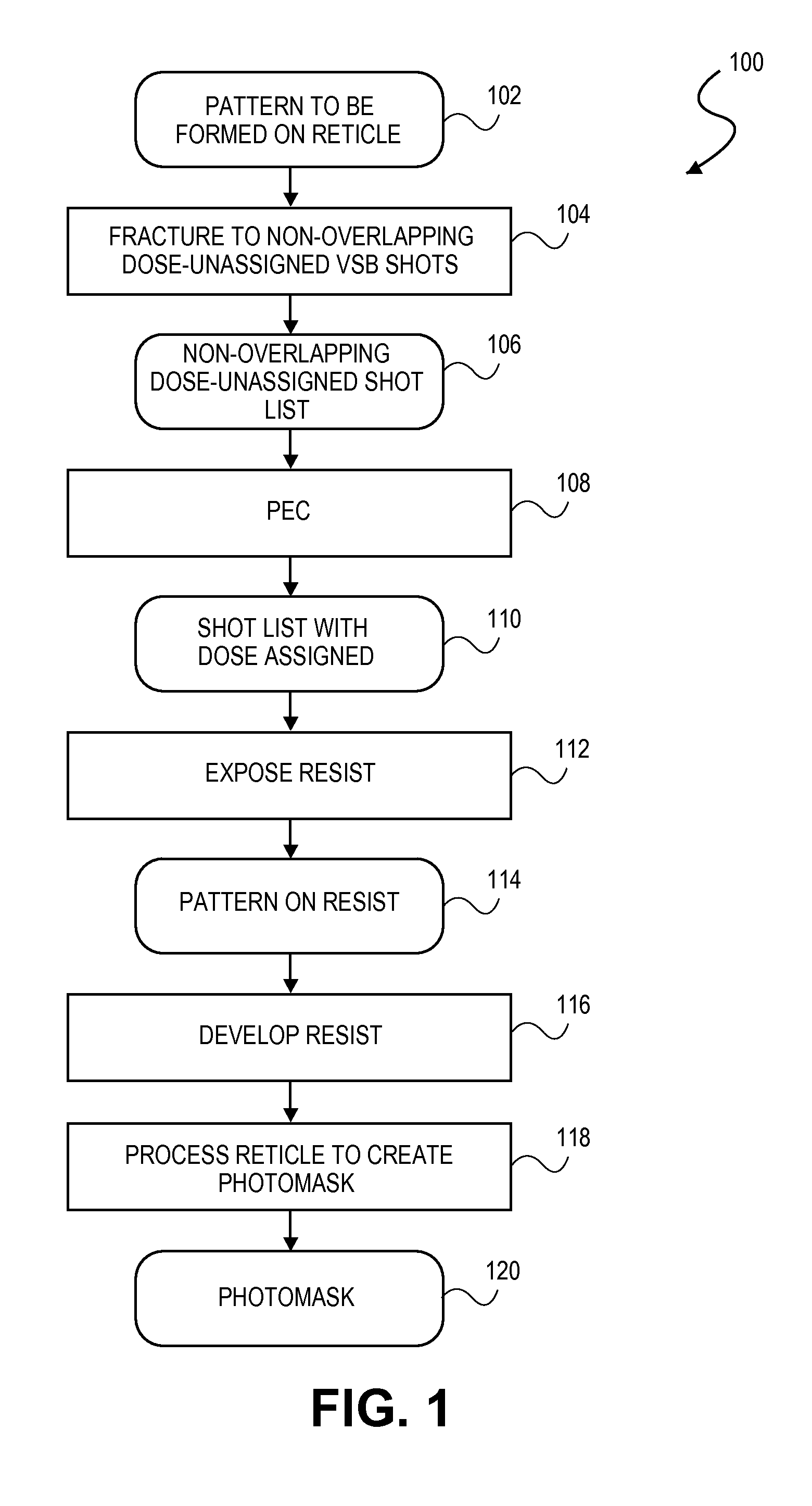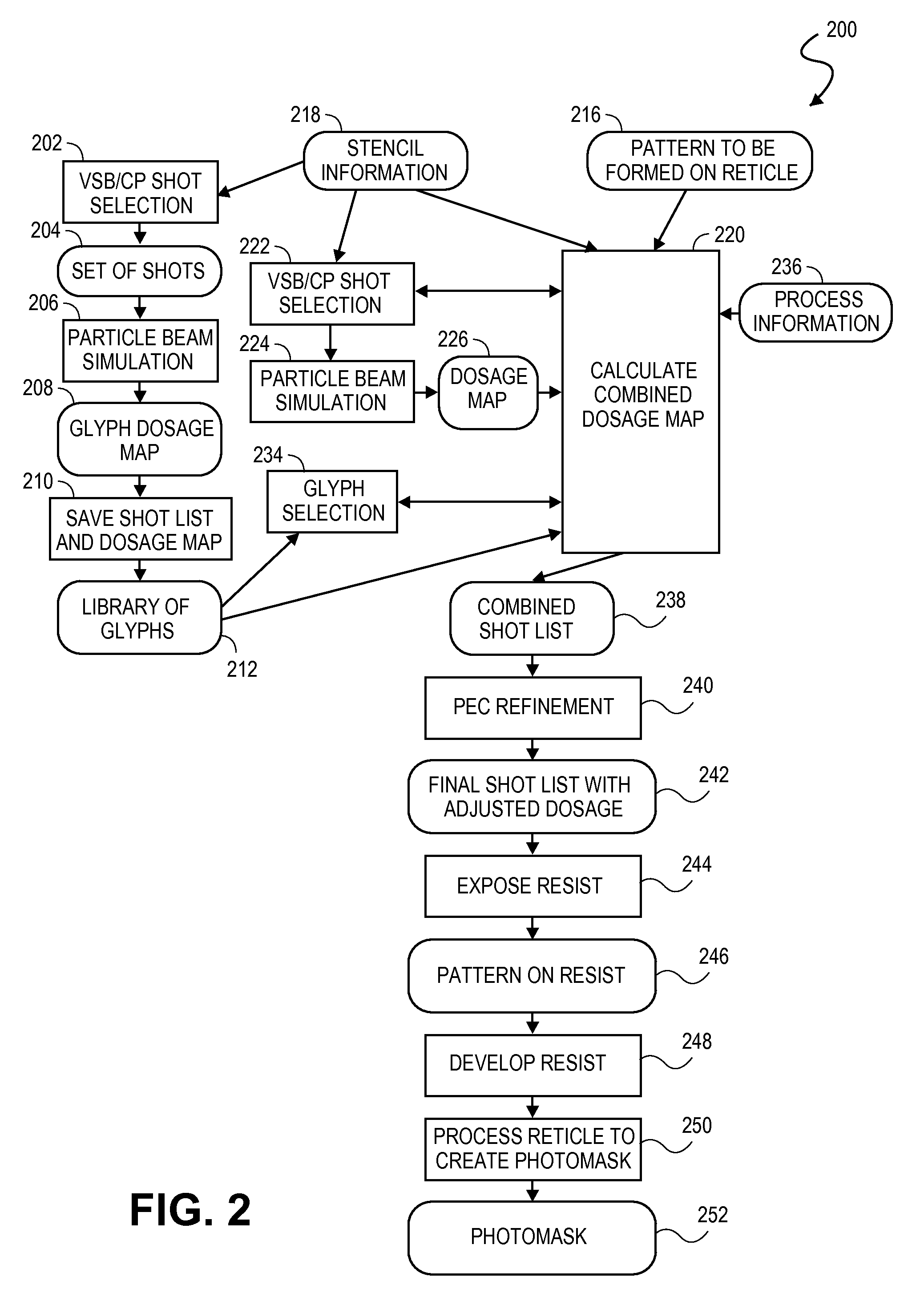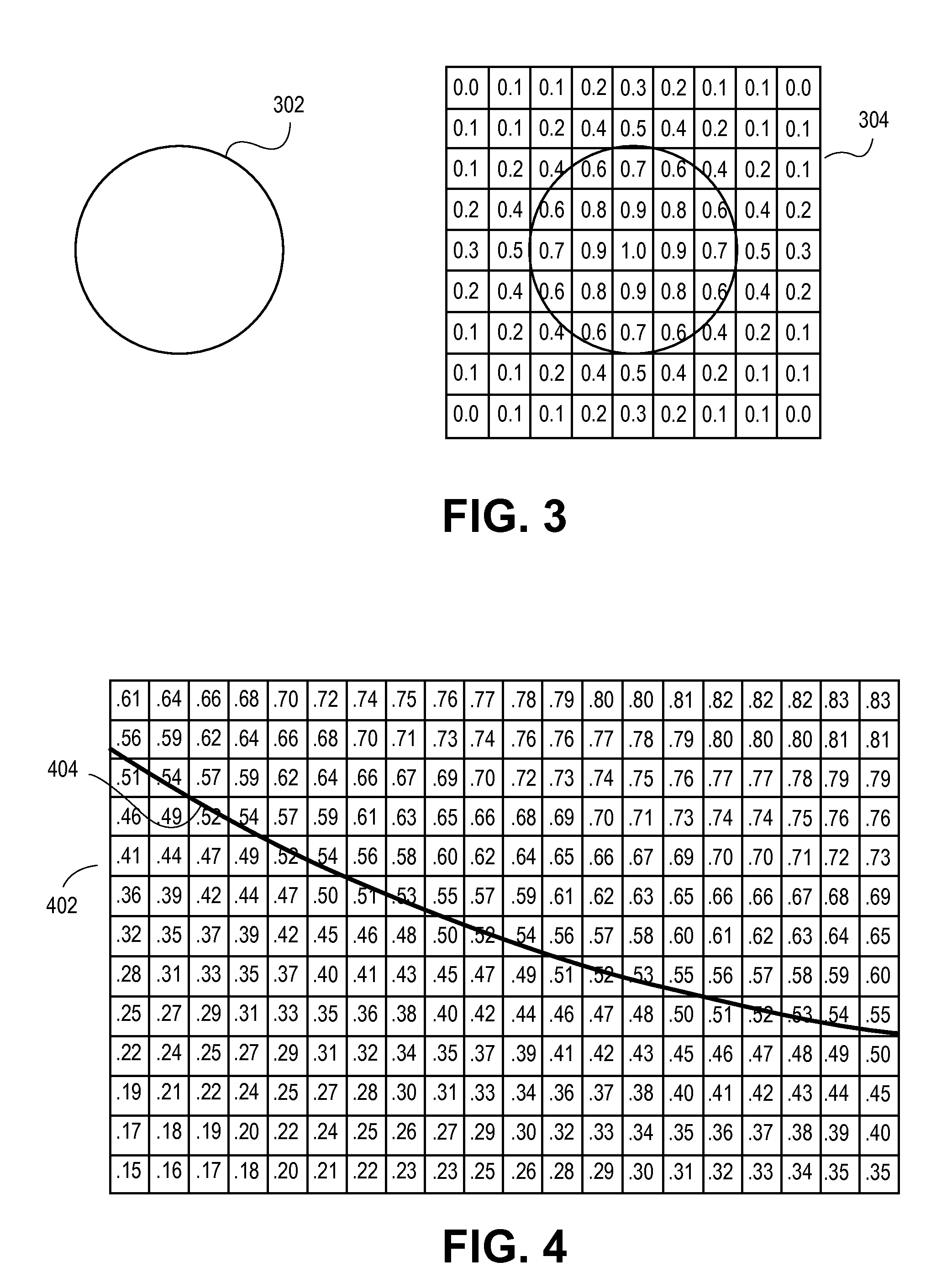Method for design and manufacture of a reticle using a two-dimensional dosage map and charged particle beam lithography
a technology of charged particle beam and dosage map, applied in the field of lithography, can solve the problems of increasing the total time required for the charge particle beam system, the resulting photomask, and increasing the cost of the reticl
- Summary
- Abstract
- Description
- Claims
- Application Information
AI Technical Summary
Benefits of technology
Problems solved by technology
Method used
Image
Examples
Embodiment Construction
FIG. 1 illustrates a conceptual flow diagram 100 of a conventional method for making a photomask. The input to the process is a computer representation 102 of a desired pattern that is to be formed on a reticle from which the photomask can be manufactured. In step 104 the pattern is fractured into a set of non-overlapping shapes, such as rectangles and triangles, for exposure using a VSB charged particle beam system. The result of step 104 is a shot list 106, in which the shots are non-overlapping. All shots are assumed to have a normal dosage, and no dosage information is contained in shot list 106. In step 108 proximity effect correction (PEC) is performed, which assigns a dosage to each shot in the shot list, and which may also slightly adjust the placement of the shots. Step 108 may also include other corrections which perform dosage adjustments. The output of step 108 is a final shot list 110 which includes dosage information. In step 112 a charged particle beam system uses the...
PUM
| Property | Measurement | Unit |
|---|---|---|
| diameter | aaaaa | aaaaa |
| diameter | aaaaa | aaaaa |
| sizes | aaaaa | aaaaa |
Abstract
Description
Claims
Application Information
 Login to View More
Login to View More - R&D
- Intellectual Property
- Life Sciences
- Materials
- Tech Scout
- Unparalleled Data Quality
- Higher Quality Content
- 60% Fewer Hallucinations
Browse by: Latest US Patents, China's latest patents, Technical Efficacy Thesaurus, Application Domain, Technology Topic, Popular Technical Reports.
© 2025 PatSnap. All rights reserved.Legal|Privacy policy|Modern Slavery Act Transparency Statement|Sitemap|About US| Contact US: help@patsnap.com



